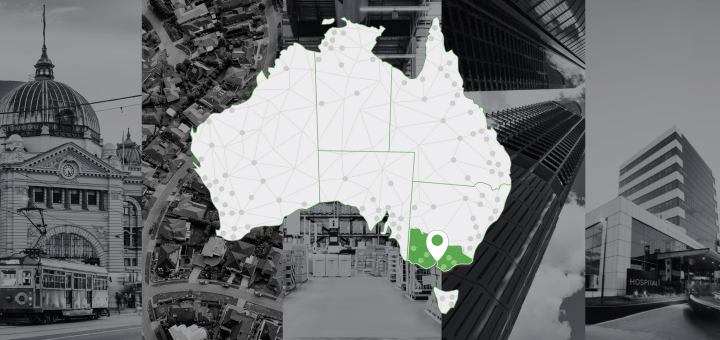In this blog, Keenan explores what the mid-year release of Business data by the ABS tells us about the COVID impacts on small business numbers.
One of the great fears last year as COVID restrictions were announced, and as lockdowns persisted in some areas of the country, was that small businesses would go to the wall. Of course the Federal Government and State Governments substantial financial support for the private sector didn’t quite see this eventuate. The Commonwealth’s combined JobKeeper payments and Boosting cashflow for employers program alone saw over $100 Billion flow into the economy in the June and September Quarters 2020 alone. However, with the end of JobKeeper earlier in the year, and changes to other supportive measures for businesses, many predicted substantial business closures this year.
What do business numbers suggest?
The ABS produce an estimate of business numbers across Australia every year utilising ABN registrations recorded in the Australian Business Register (ABR), and business data from the Australian Tax Office. They generally filter for businesses actively remitting GST through Business Activity Statements (BAS) to ensure only active business are accounted for.
The data for the financial year 2020/21 showed a substantial net increase (+88,000) in business numbers from the year before. The number was even higher than 2018/19 which would have been non-affected by any COVID measures. New registrations increased by 29,000 from the year before and business exits fell by 13,000. All jurisdictions saw increases with NSW leading the way out of the larger states at 4% annual growth.
If we look at net change by industry, it is no surprises given the massive increase in residential building approvals over the last year that construction businesses saw the largest increase in numbers (+16,603). Professional, Scientific and Technical Services saw the next largest increase (+14,432). However, these two industries represent the largest amount of business numbers anyway, so a high change in numbers is expected. The data does show that growth in terms of % change from 2019/20 was actually quite widely dispersed across industries, except for public administration and safety and transport (its likely the fall in road passenger transport is a large contributor).
Interestingly, if we look at change in business numbers by size of employment, the growth in businesses estimated as having 1-4 employees is off the charts. According to the data, almost half (45%) of this was down to previously non-employing businesses moving into this category. This contrasts considerably with previous years. The ABS state that 'in the June quarter 2020 a large movement of businesses from non-employing to employing was observed. These movements were initially withheld, before being phased in over the course of the year to June 2021, based on evidence of reported wages in Business Activity Statements.' It would seem to be highly connected to the JobSeeker program and small businesses taking advantage of additional funds for having employees on the books.
What about insolvencies?
Another source of data that can highlight the performance of businesses is the number of companies going insolvent. ASIC produce monthly and quarterly statistics on this. What does the data show? Insolvencies in the 2020/21 financial year were the lowest since 1999/2000.
The Australian Financial Security Authority (AFSA) also produce quarterly statistics on personal insolvencies, business and non-business related. Personal insolvencies have been trending downwards in recent years, but the 2020/21 financial year was again historically low. The number of personal insolvencies (10,621) was half the amount it was the year before (21,078).
So why aren’t businesses collapsing?
There are a number of reasons that could have influenced the growth in business numbers as opposed to expectation of business closures. It has been speculated that the substantial stimulus has kept many businesses afloat who would have normally closed in the last year (so called 'zombie' businesses.
In addition, a number of changes were made related to insolvency and the recuperation of debt from businesses. These ‘COVID-19 safe harbour’ provisions included regulatory changes made to increase the threshold at which creditors can issue a statutory demand on a company and the time companies have to respond to statutory demands they receive. These provisions were made to September 2020 but then extended by another three months.
Some now suggest that this may have led to an increase in 'Phoenix' activities when companies transfer assets to a new company and previous debts related to the old company cannot be recovered.
Different locations, different stories
The ABS has not released business data at a sub-state level yet, that comes later in the year. However, .id through its partnerships with local councils has access to Australian Business Register data. Utilising this data and applying some filters similar to the ABS, we can explore business trends in different locations. On our economyid sites we publish this via the business trends page (see for example Canterbury Bankstown).
If we look at councils across Greater Sydney, we can see different trends. For example, in the City of Sydney, business numbers grew by 3.7% in 2020/21. This was down from the year before (4.7%). Growth in the LGA's largest source of businesses, Professional, Scientific and Technical Services, paralleled the total change. It grew by 3.7% compared to 4.6% in 2019/20.
However, other places like Central Coast saw a 4.3% increase in businesses, up from 3.8% the year before. Leading the increase was its largest industry by business numbers - construction, up 4.1% compared to 3.6% growth in 2019/20.
Where to from here?
Many experts expect business closures to rise at some point over the next year as the tail end of stimulus impacts wind back and debt relief or deferral measures return to normal. It would also not be hard to imagine a large increase in movements from small employing businesses to sole traders at the end of 2021/22 (or at least a change in classification).
The LGA based data is released in December and economy.id sites will be updated once its released. However, as the national analysis shows, it may not present an accurate picture of the real business numbers in your area.
If you are looking for LGA trends in the meantime, be sure to explore the Business Trends section of your council's site or talk to one of our economic consultants.









